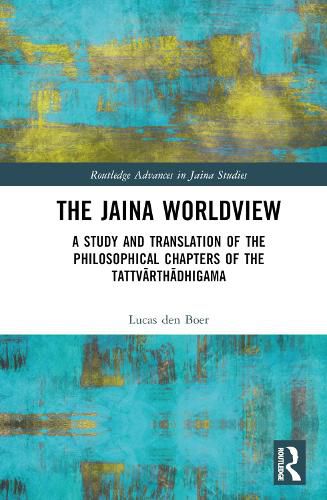Readings Newsletter
Become a Readings Member to make your shopping experience even easier.
Sign in or sign up for free!
You’re not far away from qualifying for FREE standard shipping within Australia
You’ve qualified for FREE standard shipping within Australia
The cart is loading…






This book is an analysis of the philosophical chapters of the Tattvarthadhigama (TA), a foundational text for the Jaina tradition and the first text that presented the Jaina worldview in a clear and systematic way. The book also includes the first English translation of its oldest commentary, the Tattvarthadhigamabha?ya (TABh).
Focusing on the philosophical sections of the TA and TABh, which deviate from the traditional views and introduce several new concepts for the Jaina tradition, the analysis suggests that the TA and the TABh were written by different authors, and that both texts contain several historical layers. The texts reflect aspects of the concurrent intellectual movements, and the textual analysis includes comparisons with the views of other schools, such as the Nyaya and Vaise?ika traditions, and offers an in-depth analysis of the philosophical content of these works. The appendix contains an English translation from the original Sanskrit text of the TA and provides the first English translation of the commentary on these passages from the TABh.
Situating the text in the wider history of Indian philosophy, the book offers a better understanding of the role of the Jainas in the history of Indian thought. It will be of interest to those studying Indian philosophy, Indian thought and Asian religions.
$9.00 standard shipping within Australia
FREE standard shipping within Australia for orders over $100.00
Express & International shipping calculated at checkout
This book is an analysis of the philosophical chapters of the Tattvarthadhigama (TA), a foundational text for the Jaina tradition and the first text that presented the Jaina worldview in a clear and systematic way. The book also includes the first English translation of its oldest commentary, the Tattvarthadhigamabha?ya (TABh).
Focusing on the philosophical sections of the TA and TABh, which deviate from the traditional views and introduce several new concepts for the Jaina tradition, the analysis suggests that the TA and the TABh were written by different authors, and that both texts contain several historical layers. The texts reflect aspects of the concurrent intellectual movements, and the textual analysis includes comparisons with the views of other schools, such as the Nyaya and Vaise?ika traditions, and offers an in-depth analysis of the philosophical content of these works. The appendix contains an English translation from the original Sanskrit text of the TA and provides the first English translation of the commentary on these passages from the TABh.
Situating the text in the wider history of Indian philosophy, the book offers a better understanding of the role of the Jainas in the history of Indian thought. It will be of interest to those studying Indian philosophy, Indian thought and Asian religions.